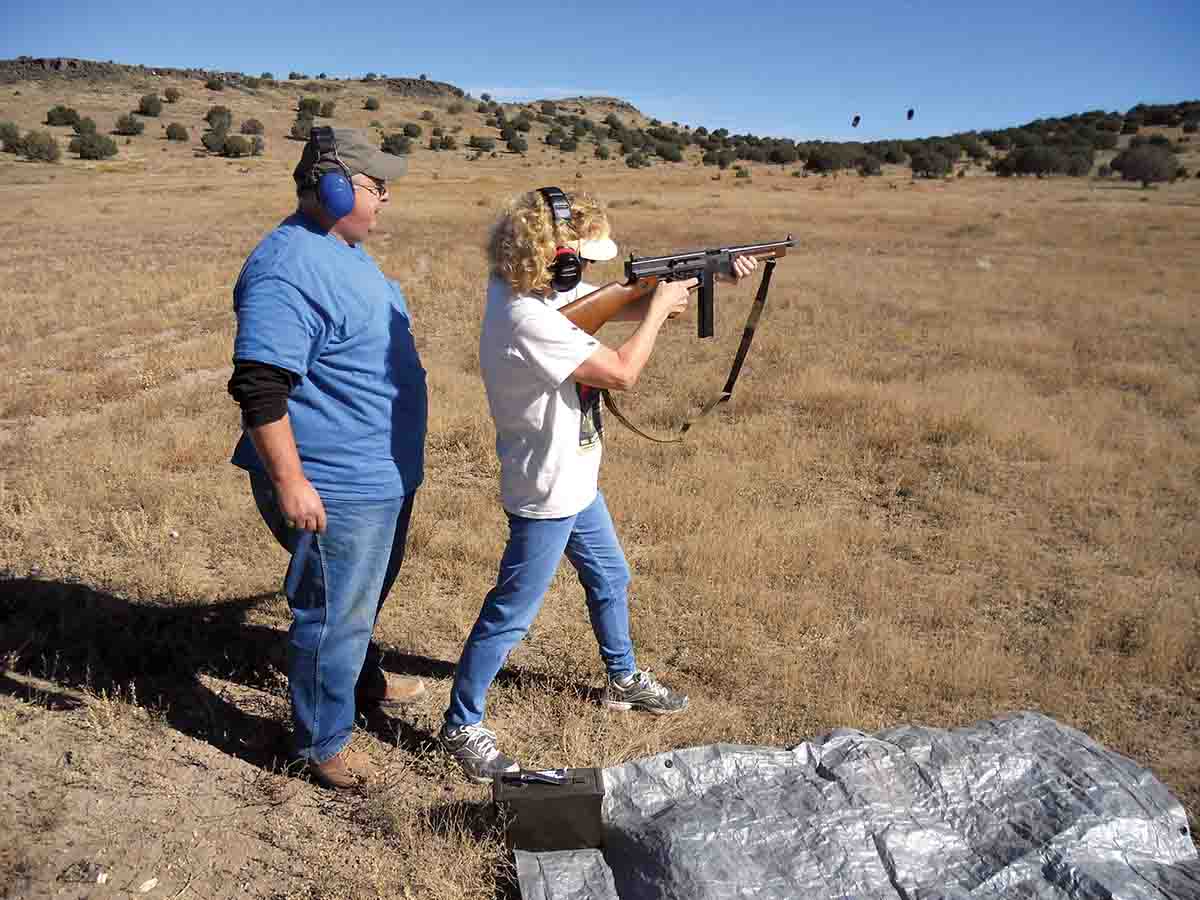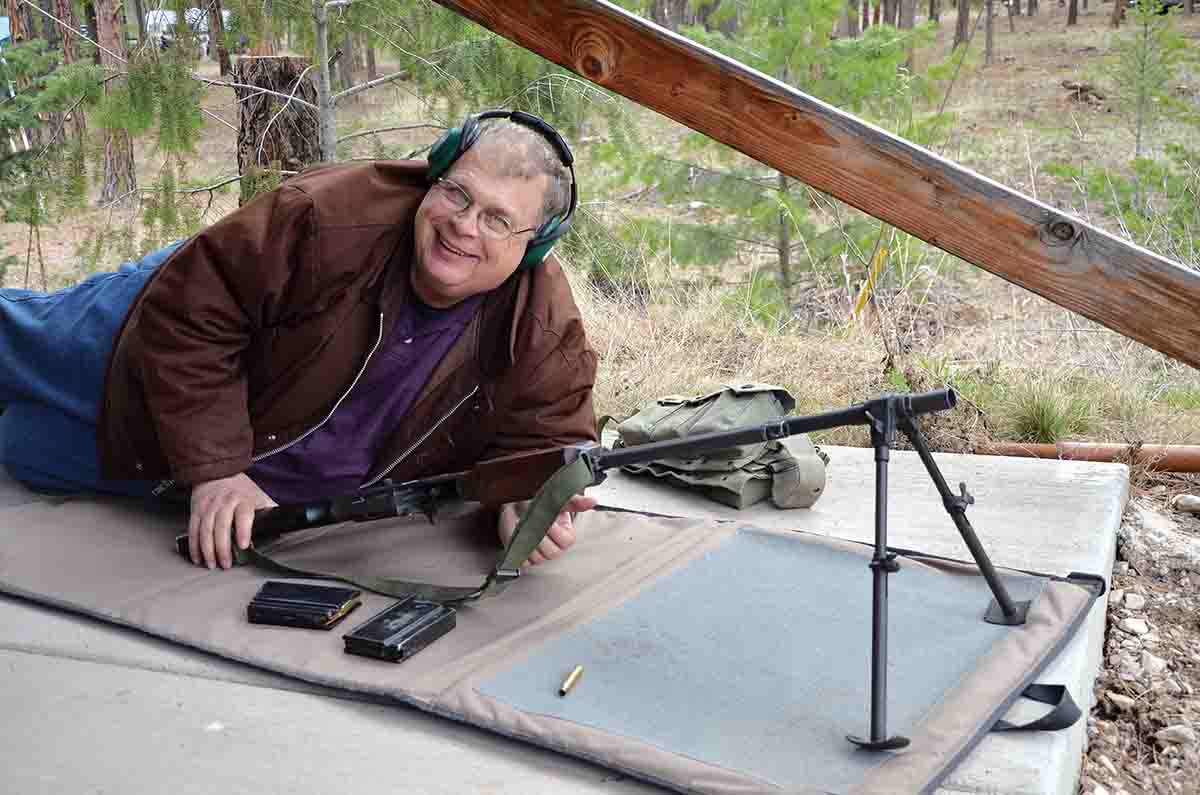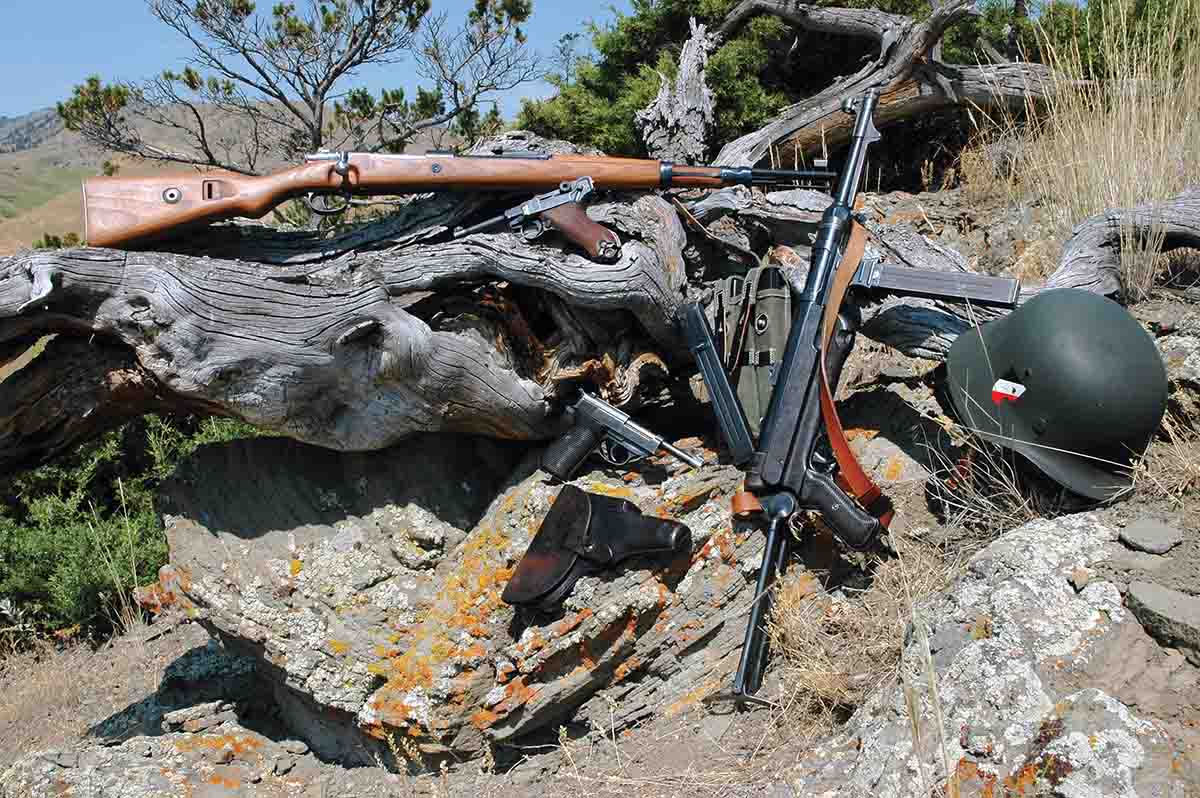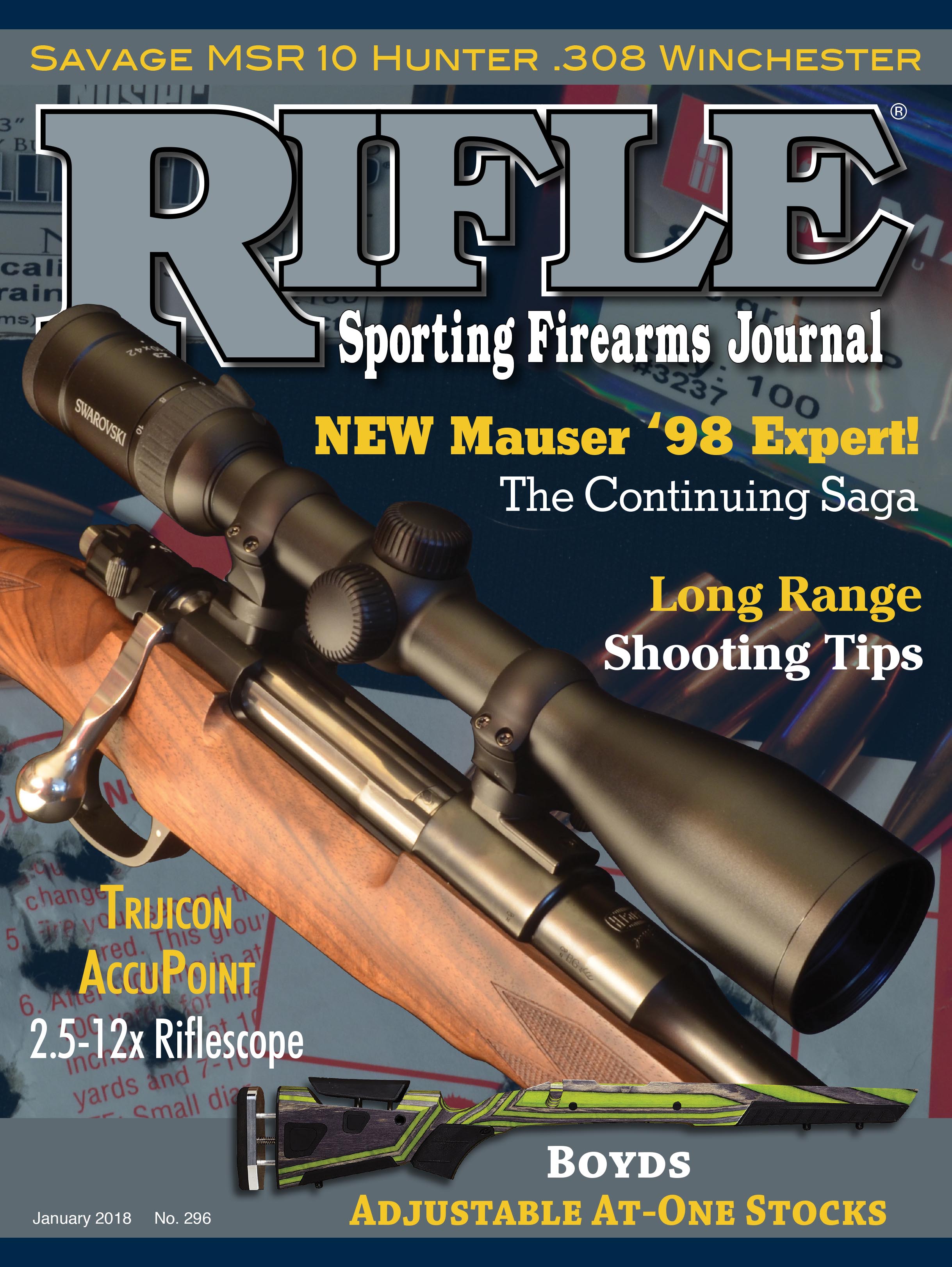Down Range
Buying and owning Full-Autos
column By: Mike Venturino | January, 18
Several weeks ago, I returned from Prescott, Arizona, where I took a couple of my World War II-era full-autos. Specifically, they were an M2 .30 Carbine and an M1 .45 Thompson submachine gun. The purpose was to participate in Wolfe Publishing’s company shoot, held on Columbus Day every year. This was the third time I’ve attended with some of my full-autos, and they have always been a big hit. The reason is simple: Full-autos make for fun shooting. I have yet to see anyone without a big grin or a belly laugh after pulling the trigger on one for the first time.

Besides their high prices, how difficult is it to legally own a machine gun? Like most of the uninitiated, for decades I felt the red tape was too complicated. It is not. You do not have to have a special license – as so many people assume. What is needed is a Class III license, and it is only required if someone desires to become a dealer in full-autos, rifles with barrels less than 16 inches, shotguns with barrels shorter than 18 inches, or suppressors.

Let’s say you spot a full-auto in a gun store with a Class III license in your state of residence. You make the deal for it. The dealer and you must fill out two Form 4s. They both must be submitted. The forms require both the buyer and seller addresses, the firearm model, its caliber and serial number. The back of Form 4 lists the same basic questions as on the Form 4473s we all fill out for regular over-the-counter gun sales. Also asked is the reason the buyer wants to own the firearm (collecting, etc.) Finally, on the back is a section that must be signed by your local law enforcement agency stating it has “no information indicating that the transferee will use the firearm or device described on this application for other than lawful purposes.” While at the law enforcement agency, you must get two fingerprint cards. A nominal fee is likely due for that service.
When sending the Form 4s, the buyer includes the fingerprint cards and two passport photos along with one check for $200 (a one-time fee), and mails them to the proper address. When approved, one Form 4 will be returned to the seller affixed with a special tax stamp. The dealer can then hand over the firearm to the buyer. The Form 4 must be with the firearm ALWAYS. If leaving your residence with the firearm, the Form 4 (or a copy) must accompany it. I’ve had Form 4s approved in as little as six weeks, and others have taken as long as six months.
Here’s another scenario. Let’s say you have an acquaintance who is a resident of your state. He owns a full-auto and decides to sell it to you. Again, this requires a Form 4, which can be printed directly off of the National Firearms Act (NFA) section of the BATFE’s website. It is filled out and submitted exactly as above. When approved it will be sent to the seller, and you can then receive the firearm in person. That is the way I obtained my first full-auto, a German MP40 9mm submachine gun made in 1941, which I spotted at a Montana gun show.

Here’s the third manner by which full-autos can be transferred. Let’s say one is spotted on an Internet website in another state. Likely, it will be advertised by someone with a Class III license. A prospective buyer must then make arrangements with an in-state dealer to obtain the transfer from the out-of-state dealer. Then the process can proceed for your in-state dealer to transfer the firearm to you by way of the Form 4. Your dealer will likely have a set fee for the service.
Before buying a full-auto it would behoove the new owner to check out where it can be safely and legally fired. Many public shooting ranges prohibit firing full-autos. A friend once owned a 5.56mm select-fire M16 that he occasionally took along on ground squirrel-shooting forays. After a while he sold it, because nearly every time he fired it someone called law enforcement. He said the responding sheriff’s deputies were always agreeable, only asking to see his paperwork. Still, he gave up and sold it. (I have a small area set aside on my Montana acreage for shooting mine, and the local law enforcement folks know me.)
Once you have the Form 4 paperwork and have possession of a full-auto, you are free to travel around the state of your residence with it, keeping in mind that you must adhere to all local laws and ordnances. Besides shooting mine, I’ve taken some to gun shows to set up displays of World War II small arms.
To leave your state with the gun, a Form 5320-20 must be obtained from the BATFE/NFA that details travel plans, guns being transported and purpose for the trip. If traveling by ground, full-autos cannot be taken through states that prohibit them. For me to drive to Prescott means passing through Idaho, Utah and into Arizona, so I’m good.
Several friends and acquaintances have joked that I’ve “gone to the dark side.” Not at all. I consider myself a firearms historian, and I’m simply following my interests.


